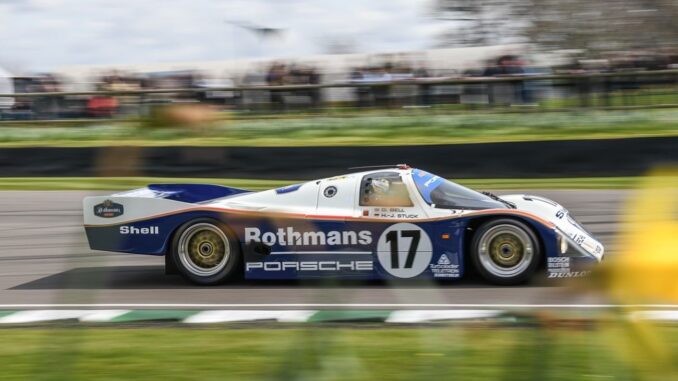
This official book celebrates the centenary of the world’s greatest sports car race and has been written and published in collaboration with the Automobile Club de l’Ouest (ACO), who created and are the organisers of the Le Mans 24 Hours.
It is therefore fitting that the book’s preface is written by Pierre Fillon, who is the current President of the ACO, in which it he recalls his first visit to the Le Mans 24 Hours with his grandfather back in 1966 when he was just 7 years old, and hasn’t missed a single year since, which is quite some achievement.
Recalling this memorable race, Fillon says:
“That 1966 race encapsulated what this race is all about. That year, Ford, with its famous GT40 Mk II developed by Carroll Shelby, and Ferrari, with its no less legendary 330 P3, fought an epic battle on the track. The American marque succeeded in breaking the Italian firm’s dominance by achieving a resounding treble, a momentous accomplishment that Hollywood brought to the cinema in 2019. These famous ‘Le Mans 66s’ remind all enthusiasts that endurance racing is incredibly challenging, and that Le Mans in particular is such an intense test for all the cars and people involved, with nothing decided until the chequered flag.”
Adding:
“In 1923, the foundations were laid for what would over the years become the world’s greatest endurance race. The aim was to finish the race. One hundred years on, this desire is still shared by the 200 or so drivers who take to the track every year.”
He goes on to say:
“The legend of the 24 Hours has developed over the years, through exploits, joys, dramas and records. The close link between racing and the cinema is obvious. While famous actors have taken part in the race (Paul Newman, Patrick Dempsey, Michael Fassbender…) and films have been devoted to the event (Le Mans 66, Le Mans…), the events that unfold are sometimes worthy of any Hollywood script. In 2016, when the official starter was none other than Brad Pitt, Toyota looked to be heading for its first victory. But then, as the leading #6 TS050 Hybrid was preparing to set off on its final lap, something went wrong, and Kazuki Nakajima had to slow down before finally stopping short of the line. Neel Jani, in the Porsche 919 Hybrid #2, completed the last lap and handed Porsche an unexpected last-gasp triumph. Actually, it’s not uncommon to see unexpected outcomes like this in the various categories, with every year bringing its share of incredible stories and anecdotes.”
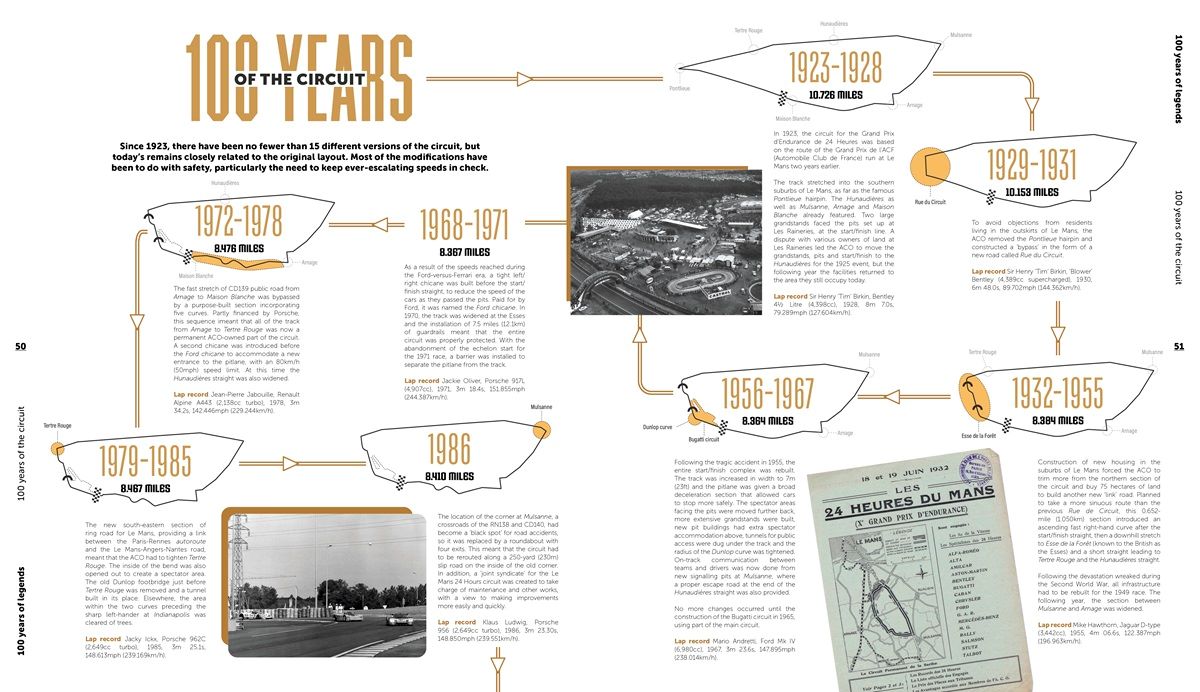
Over the last 100 years, the Le Mans 24 Hours has itself become a legend. Competing at Le Mans means pushing both the car’s and your own limits as a driver. It also means that you can go through feelings of happiness, sometimes sadness, and always melancholy once the race is over.
The Le Mans 24 Hours has played a crucial role in the evolution of the car, with the link between motorsport and the road still is as strong as ever today, helping to push the development of the automobile, acting as a laboratory of innovation, and shaping the cars of tomorrow.
The race has fascinated generations, with millions of spectators all over the world discovering this temple of speed and enjoying an unparalleled experience. Le Mans appeals to all the senses and watching it live is something you should experience at least once in your life if you ever get the chance.
Four French co-authors have put the book together, and include Gérard Holtz, who has covered the world’s greatest sporting events, including the Tour de France, World Cup, Roland-Garros, Olympics, F1 and Le Mans during his 45-year television career.
Julien Holtz, his son, is a consultant and software designer who has co-written many sports books with his father.
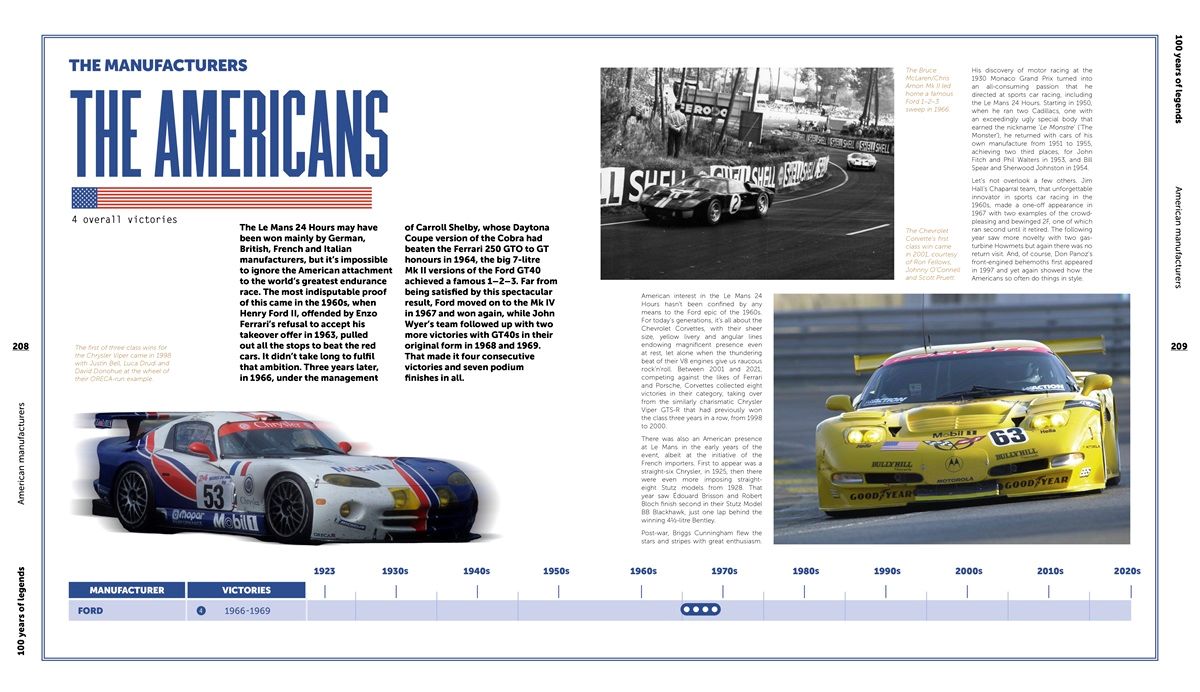
Basile Davoine is a sports journalist and content manager for the website motorsport.com, while Denis Bernard is an audio-visual director, automotive journalist and driver who has scripted many comic-strip books about Le Mans.
The book opens by taking you through the origins of the Le Mans 24 Hours and recalls the most memorable moments in the event’s history, taking an imaginative thematic approach in examining a wide range of topics and giving a complete picture of the last 100 years, from the very first race that took part on Saturday 26th May 1923 at 4pm around the 10.726 mile circuit, right up to Ferrari’s victory in the centenary year.
The race regulations are covered, as are the trophies. The book also goes into great detail about many of the drivers and the cars that have taken part over the last 100 years, including the rookies. It is interesting to read about how the pitstops evolved over the years.
Something I didn’t realise, is that there have actually been 15 different versions of the circuit over the years as changes were made to the layout and length, with today’s circuit remaining closely related to the original layout. Between 1923 to 1928, the circuit was 10.726 miles in length, which was then reduced to 8.284 miles between 1932 and 1955 and has remained at just under 8.5 miles in length since then and is currently 8.467 miles. And of course, one of the key aspects of the circuit is that a large proportion of it is still comprised of public roads.
Throughout the last 100 years, safety has played and important role, as new measures were introduced on a regular basis and lessons learned following tragedies on the circuit. And quite rightly, a mention is given to the many marshals that are posted around the circuit and act as the “eyes and hands” of the race director. Likewise, the medics play a crucial role. In the early years there were only a handful of suitably qualified volunteers which compares to today’s extremely sophisticated and elaborate medical facilities.
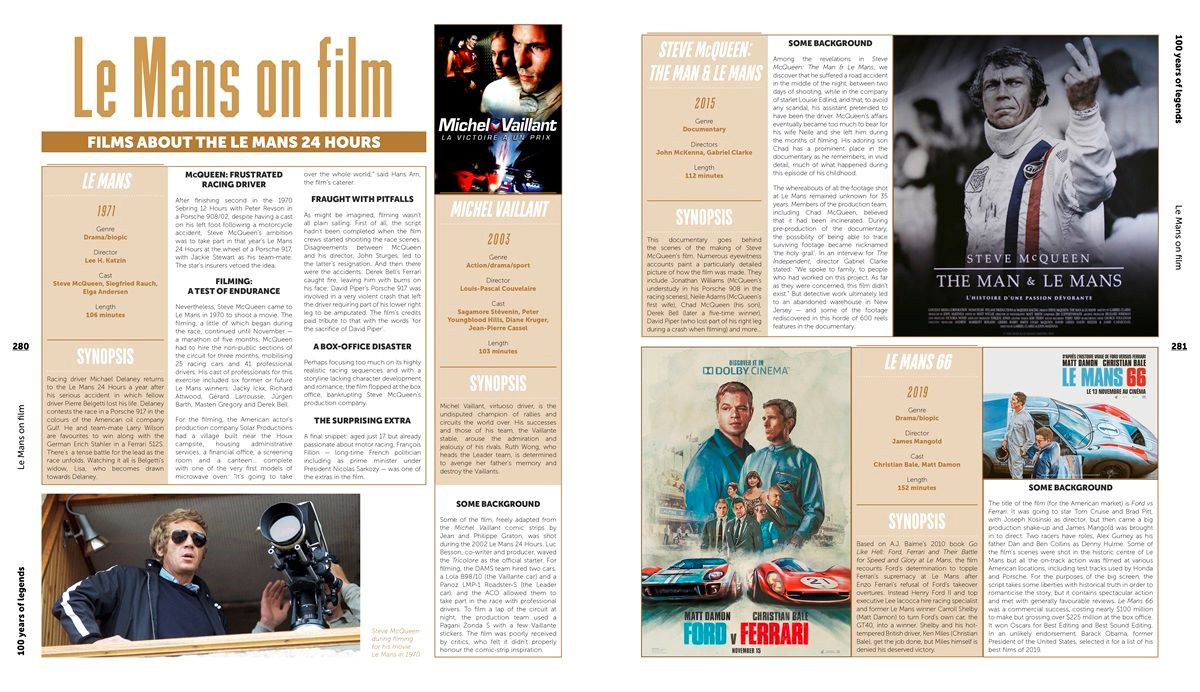
As you’d expect, the speed of the racing cars has increased over the years. In 1923 for example, the average speed was just 57.206mph. It increased to 75.876mph by 1930 and was up to 89.714mph by 1950. It then increased to over 100mph three years later to an average of speed of 105.842mph. By 1963 it was 118.105mph and then rose to 138.133mph by 1971, rising to 139.950 by 2010 before reducing slightly to 136.329mph in 2020.
Similarly, the top speeds have increased over the years, increasing from 165mph in 1961 to 252mph in 1988 before coming down to 216mph in 2020.
The Le Mans 24 Hours is viewed by many in the industry as the place where the pioneers of motor racing would go before it was transformed into a veritable technological melting pot, providing a raft of records.
The race’s success invariably needed charismatic figures at the helm, and so a mention is given to the captains of industry, visionary entrepreneurs and team managers that have left their mark over the years.
Timekeeping has been a crucial part of Le Mans 24 Hours. In the early years everything was done by visual observation, and with a stopwatch, pen and paper. Today it is all computerised in real time and linked to the internet, television and even smartphones.
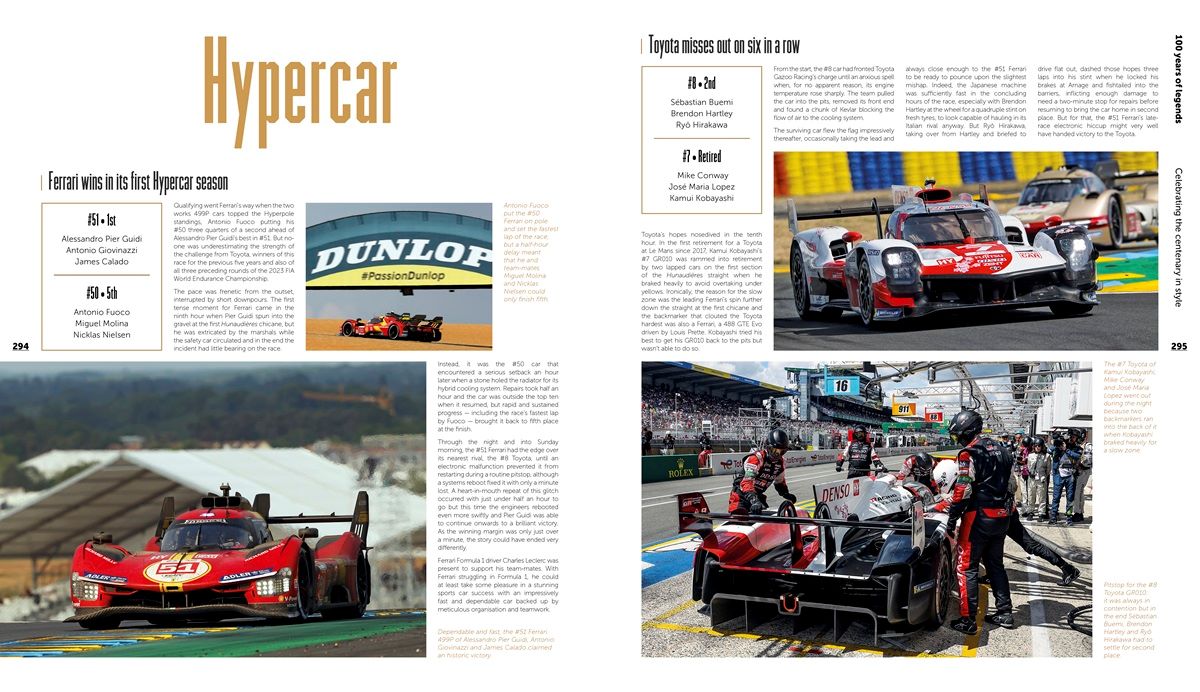
The book naturally features many of the great drivers and cars, and there is enlightening coverage of the technical evolution, with the emphasis on the innovations and curiosities so evident at Le Mans over the years. This includes aerodynamic advances, pioneering engines, including turbine, rotary, diesel, electric and hybrid, as well as tyre development, with Dunlop achieving 34 victories, Michelin 32 victories and Goodyear 14. The evolution of the cars’ headlights is also covered, being a crucial element in the night stints behind the wheel at such high speeds.
The legendary prototypes seen over the years are featured, as are some of the iconic and memorable car liveries, such as the Rothmans Porsche 962C in 1986, the Silk Cut Jaguar XJR-9 LM in 1988 and the Team Bentley Speed 8 in 2003.
A chapter is given to the manufacturers and include the likes of Bentley, Alfa Romeo, Audi, Bugatti, Ferrari, Jaguar, Ford, Porsche, Matra, McLaren, Peugeot, and Toyota, many of whom have been predominant names over the last 100 years.
And of course, the cars themselves, from the 1923 3-litre Chenard & Walcker to the 2023 Ferrari 499P Hypercar, plus some of the eccentric machinery that has added fascination over the years.
Then there are the drivers. The greats are topped by nine-time winner Tom Kristensen, six-time winner Jacky Ickx, five-time winner Derek Bell, four-time winner Yannick Dalmas and three-time winners Phil Hill and Allan McNish. A mention is also given to the rookie winners and pioneering women drivers, 66 of which have represented 15 counties since 1923.
Extensive period illustrations, infographics, diagrams, poster artwork and memorabilia give a visually vivid book that offers a complete story of the Le Mans 24 Hours, told from the inside. A must have for any racing enthusiast.

Publication: 7th November 2023
UK price: £70.00
ISBN: 978-1-910505-88-5
Format: 300x260mm, hardback
Page extent: 336 with over 600 images
100 YEARS OF LEGENDS: THE OFFICIAL CELEBRATION OF THE LE MANS 24 HOURS
By Denis Bernard, Basil Davoine, Julien Holtz and Gérard Holtz
Published by Evro Publishing
For more information and to purchase your own copy of the book, please visit the Evro Publishing website. It is also available at Amazon and Waterstones.
Author Bio:
Simon Burrell is Editor of Our Man Behind The Wheel, a member of The Guild of Motoring Writers, professional photographer and former saloon car racing driver.
Images courtesy of Evro Publishing / Rothmans Porsche photo by Gary Harman



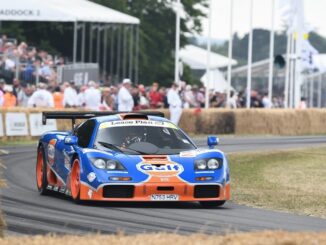

Be the first to comment